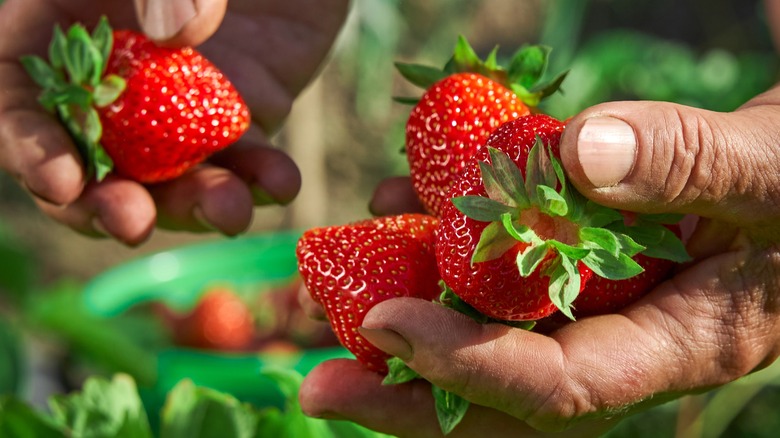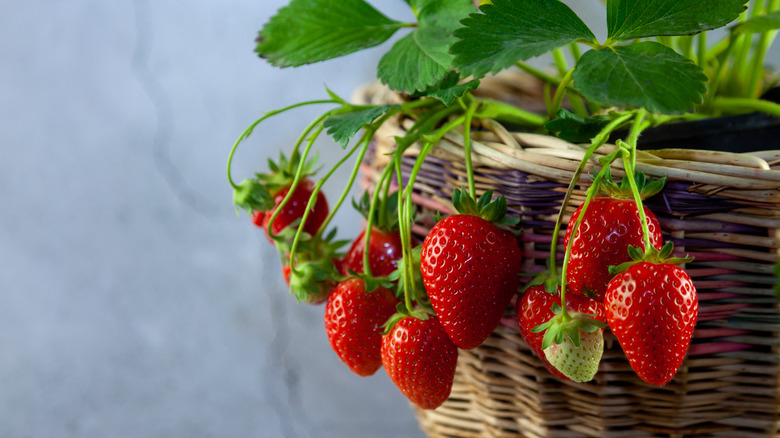The Strawberry Picking Mistake You Should Never Make
From shortcakes to sorbets and other sweet desserts, strawberries will always have a place in the baking world. The flavorful fruit is also one of the easiest to grow, according to Almanac. Because they require six to 10 hours per day in the sun, they must be planted in an area that has direct access to sunlight. Strawberries are typically ready for harvest four to six weeks after blossoming, though Almanac advises that you pick berries every three days and only pluck the ones that are fully red.
Fortunately, you don't have to be the gardening type to enjoy these delicious berries. Per Strawberry Plants, the best store-bought strawberries are the ones without white or green tips. Strawberries that aren't fully red were picked before they were ready, resulting in a tart flavor rather than the sweetness the fruit is known for. In case you're wondering, here's how to choose the best strawberries.
Because wild strawberries usually taste better, you might be tempted to pick from an outdoor strawberry plant that you didn't grow. However, this may not be the best idea, as the fruit you're picking might not actually be a strawberry at all.
Look out for imposters
When picking your own strawberries, there is one thing in particular that you should be wary about. The fruit that you identify as a strawberry might actually be a mock strawberry, according to Taste of Home. Though these berries are harmless if consumed, their bland flavor will put a damper on your otherwise tasty creation. So how do you identify a real strawberry from a fake one? For starters, mock strawberries have yellow flowers rather than white or pink ones like the real fruit does. They also have a bumpy surface, whereas real strawberries are typically flat.
According to Den Garden, mock strawberries are dry and crunchy instead of juicy, which makes them easy to identify after you've tasted one. They also have an unpleasant, bitter aftertaste. Mock strawberries, also called Duchesnea indica, come from Asia. Due to their ability to spread quickly, they became a formidable weed shortly after their introduction to America (via Dengarden).
Next time you're outside and you see strawberry-esque plants, take a close look and see if you can identify the difference. If you happen to stumble upon the real deal, consider using them to whip up a strawberry shortcake.

